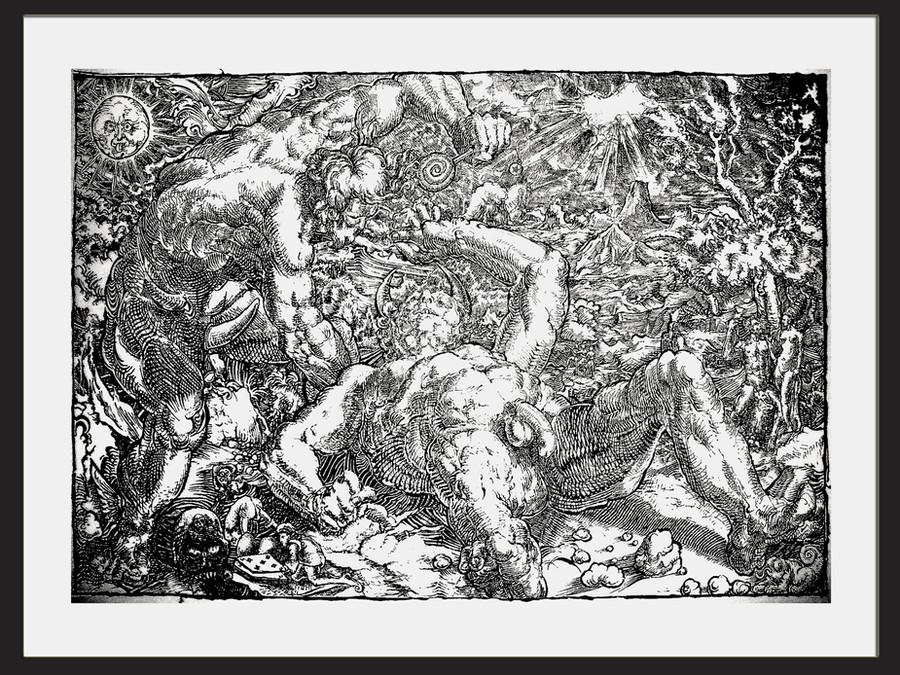HOME | DD
 gromyko — Minotaur's Recompense
gromyko — Minotaur's Recompense

Published: 2010-10-30 06:25:08 +0000 UTC; Views: 3278; Favourites: 40; Downloads: 169
Redirect to original
Description
The Minotaur's Recompense32x40inches
ink on board
The Minotaur's Recompense
Vicente-Ignacio Soria de Veyra on Gromyko Semper’s The Minotaur’s Recompense:
It is easy to dismiss Gromyko Semper's The Minotaur's Recompense as just another craftsman's artisanal ink rendering of an archaic literary or political myth. A second look, however, would remind one of Picasso's variations on the Minotaur as symbol of the pampered figure of a civilization (in his earlier etchings) as well as the expressionless witness of civilizations' carnages (as in his Guernica mural).
For his own Minotaur painting, Semper uses a title that would allude more to Giorgio de Chirico's The Soothsayer's Recompense, which was essentially a painting about Ariadne left by Theseus in the Minotaur's Labyrinth.
Consider the possibility that de Chirico's painting is as political as Guernica and was probably an allusion (prophetic, too, having been painted in 1913) to men's wars (World War I started in 1914) where women's sacrifices get the recompense of the loot. After being left by Theseus on the island of Naxos in the slain Minotaur’s Labyrinth, Ariadne marries the god of feasts and luxury, Dionysus. Dionysus and the new lair were therefore Ariadne’s recompense for aiding Theseus in the latter's quest to murder the Minotaur. In de Chirico's painting, it would seem that Theseus boarded a train (in the background) for, say, Germany and left Ariadne for Dionysus to pick up.
In Semper's version, however, it's the Minotaur who is compensated. But here the puzzle begins. Visually the ink painting is already quite a puzzle, literally puzzling as well as referentially. Referentially, is the figure above the lying Minotaur the figure of Theseus, or is it the Minotaur's own double? Are Theseus and the Minotaur one? Did Theseus, in this painting, end up as the Minotaur's lover? Is the figure above holding a weapon or a lollipop? If that's not Theseus, is it Dionysus? Is it Ariadne, who in this gay-baiting suspicious question may be deemed as "really a man"?
Contextually, a symbolic question would be: if in Semper's mythology it's the Minotaur who won, and his recompense becomes Theseus or Dionysus or Ariadne, what political allusion—if any—is Semper pushing? If the Minotaur is as much a symbol of an evil ruler luxuriant in his Labyrinth as of religiosity (as in Guernica, worshipped by the figure of a genuflecting woman), who is Semper referencing? Your guess is as good as mine, but one thing for sure: this is no baroque interpretation of religious figures but a rococo playfulness which could be a product of either a savage artistic irreverence or serious iconoclastic anger. Take a hint from the Sun in the background, who either has his tongue or a whistle dangling from his mouth.
This is no simple illustration. For it would seem that Semper is open to a further twisting of this, his own twisting upon Picasso’s and de Chirico’s twisting of a perpetually twistable theme.
Related content
Comments: 6

Wow, like the classic feeling. Shame that this is so small here, I would like to learn from closer details.
👍: 0 ⏩: 0

its shown bigger now
so see the details miss you my friend
👍: 0 ⏩: 1

Albrecht Durer could not have done better.
👍: 0 ⏩: 0





























